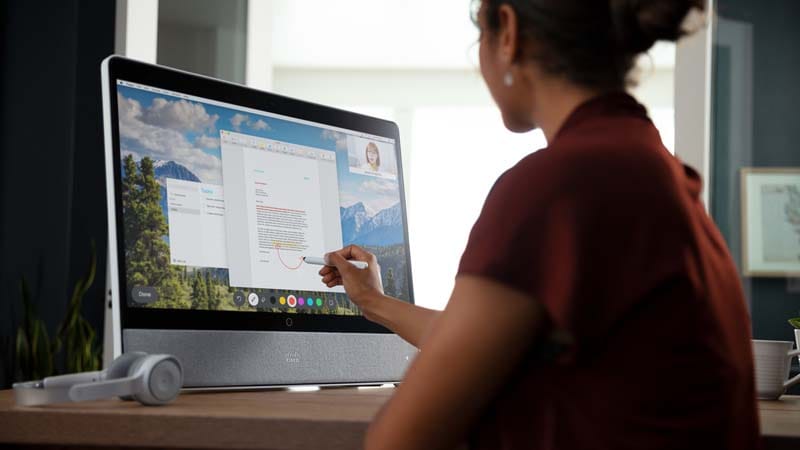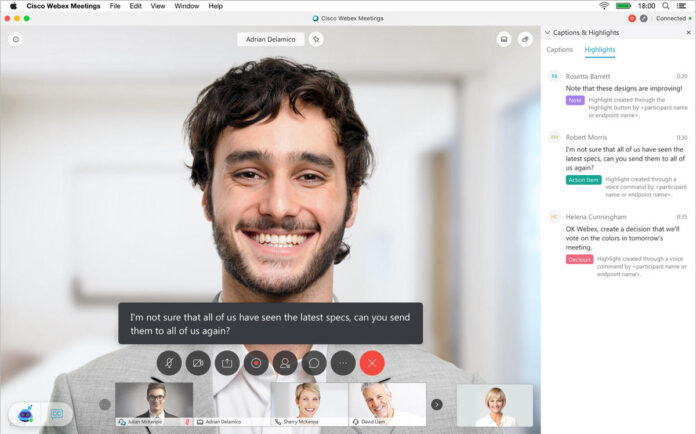The pandemic has dramatically changed how people work—and how people feel about going back to their offices. According to a new global survey commissioned by Cisco, 95% of workers are uncomfortable about returning to the office given the current health crisis, 98% expect future meetings will have participants joining from home, 53% of companies are planning to optimize their office footprint, and 96% want intelligent technology to improve work environments.
“As the world carefully begins to move towards a deceleration phase of the COVID-19 pandemic, attention is shifting towards reducing restrictions and resuming normal life,” said Karrie Ilagan, managing director of Cisco Philippines. “Cisco is enabling the next normal through its approaches to returning to the office, supporting businesses and the economy, helping customers achieve their goals and bolstering our communities around the world.”
In its goal to understand the impact of COVID-19 on work environments across the globe, Cisco commissioned a study led by Dimension Research entitled The Rise of the Hybrid Workplace. The global survey included respondents across North America, EMEAR, APAC, and China explored how businesses have and should adapt to the after-effects of the pandemic.
Employees working from home is the new normal
Despite the gradual reopening of some economies, 58% of those surveyed indicate that they will be working from at least eight days more each month. Following this is the heavy reliance on video meeting solutions as only 2% of the respondents believe that all meetings will be done with everyone physically in the room.

However, businesses still need to catch up with the sudden change in working environment requirements. Since most workers rely on laptops for home meetings, the top three issues that frustrate employees during video meetings are poor audio (50%), too many people talking at once (47%), and other participants being in a noisy environment (46%).
As a result, there is a clamor for dedicated meeting technology. The most requested by participants are a high-quality headset, a digital meeting assistant to capture notes and action items, and digital whiteboards.
Employees uncomfortable returning to the office
Unsurprisingly, 95% of workers are still fearful of returning to the office due to the possibility of contracting COVID-19. Naturally, workers will need to see their employers implement changes and policies that will make the workplace feel safer if they were to be asked to return including sanitation and social distancing.

While it’s inevitable for businesses to require some time in physical workspaces, 64% of employees expect more work flexibility that encourages work-from-home setups and adaptable schedules. There are still questions about how businesses can make workplaces safer, but both employers and employees agree that technology can make a work environment feel safer more comfortable.
Creating a hybrid work environment
The shift in work environments are necessary, but businesses will still need to mitigate costs and capture savings. 53% of businesses, led by larger enterprises are already looking into downsizing office locations while 77% are promoting work flexibility. Despite the challenges of the pandemic, decision-makers are already taking necessary steps to help employees thrive in the workplace. While sanitation of physical workspaces are important, businesses are focusing on enabling work-from-home employees with increased use of video meetings, collaboration applications, and collaboration devices.

Identifying the right solutions
The survey results clearly illustrate the need for the right collaboration technology. With that as the backdrop, Cisco rolled out innovations for both the remote and the in-office experience—to help teams stay safe and get great work done as companies navigate 2020 and beyond.
“The future of work will be hybrid: people will work in the home and corporate office to varying degrees depending on the nature of their jobs. Our mission is to make the Webex experience 10x better than in-person interactions,” said Jeetu Patel, SVP and GM, security & applications group, Cisco. “And when people do have in-person interactions, we want Webex to make those experiences 10x better than before, with our deeply integrated collaboration devices and software stack.”
It’s critical that companies nail the video meeting experience. Webex is full of features to help users before, during and after meetings, and has added innovations that focus on better user experience in design interface and noise reduction. For businesses returning to the office, Cisco has collaboration tools such as Webex devices and Webex Room Navigator help businesses optimize their space, address worker concerns about sanitation and social distancing and plan how to communicate policies and information clearly.
“The key is to accept that these changes are here to stay, and organizations need to assess the gaps in their operations that can be addressed by early investments in technology” advised Ilagan. “At the same time, organizations should recognize the right technology that serves specifically what the organization needs, and complement with the necessary training for all the users to maximize potential of these tools. After all, technology is only as good as the people who use it.”
